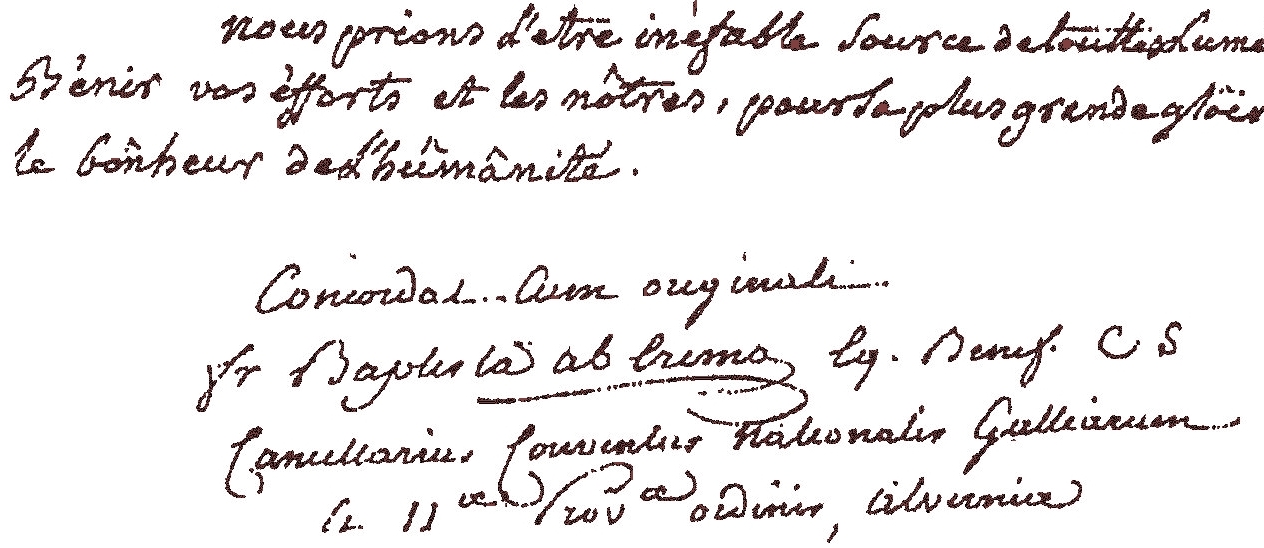The Second Great Masonic Oration?
When a Grand Lodge or, better, the Conference of Grand Masters meets, do you think that it talks about the meaning of Masonic symbols, debates the origins of the Craft or discusses the true meaning of Initiation? Me neither! And yet these were precisely some of the topics discussed at the early Conferences in the Continent of Europe in the 18th and 19th Centuries. I hope that Masons – and friends of the same – will find something of interest below.
In 1737 Chevalier Ramsay delivered his famous Oration, in which for the first time a link between chivalry or knighthood and Freemasonry was alluded to.
Over the following years, especially on the Continent of European, this led to a proliferation of Masonic Orders which incorporated the word ‘Knight’ or ‘Chevalier’ into their titles; in some countries chivalric Orders saw a revival of interest; and in others – Germany for example – a fusion of Masonry with Chivalry was observed, notably in the Order of Strict Observance which, while being ostensibly Masonic in nature with Grades and formal Rituals, nevertheless limited its higher Grades to those of noble birth alone.
Some 41 years later, in 1778 a National Convention was held in Lyon to decide on a number of issues which had arisen during the intervening period. While this was a National and not an International Assembly, and limited to France, its influence was such that only a few years later the famous Convention of Wilhelmsbad was held, which saw the great and the good from across Europe attend with the intention of determining once and for all the fate and direction of Freemasonry (at least that was its intention, if not for the untimely intervention of the French Revolution…).
The first great Convention, that of Lyon, was cunningly put together by Jean-Baptiste Willermoz, a prominent Mason in the region, who also happened to be the Chancellor (i.e. Grand Secretary) for the Province in which the Convention was to be held. He therefore controlled both the Agenda and the Minutes, and had the ability to steer the month-long Convention in the direction he saw fit.
While this is not the place to go into the politics of the venture, or how Willermoz presided over the demise of the Rite of Strict Observance and its Templar pretentions, giving birth to a spiritual form of Freemasonic Chivalry which saw the title ‘Brother Knight’ introduced, and an Order which claimed nothing less than to be the path to Spiritual Reintegration, one of the outputs of the Convention is quite extraordinary. That is the Educational Document or Instructions produced by Willermoz himself as the request of the Committee of the National Convention of Gaul (the old name for France).
In a way this is a pivot document, not unlike the Fourth Grade of the Scottish Rectified Rite, in that is looks both backwards and forwards. However, in this instance it serves three purposes:
- To educate new Knights about the origin and purpose of Freemasonry and their Masonic journey up to that date;
- As a re-statement of Chevalier Ramsay’s Oration in more contemporary language, to rectify the document in light of newer thinking on the origins of Freemasonry, and the fact that Templar infiltration had, to some extent, corrupted its original purpose, and to set the scene for the new Order (being that of Knights Beneficent of the Holy City);
- To give a hint that there are further Grades available to those who truly do the work and come to the realization of their existence.
There is reason to believe that Willermoz already knew the outcome he wanted from the Convention before it started, and it is quite likely that this document, if not in its final form, had been drafted in anticipation long before the Convention. One indication of this is that it would have been difficult to produce such a document from scratch, and be ready for approval by the time the Convention had ended, especially given the fact that Willermoz was responsible for recording everything which took place during that busy month. Discover the ultimate vaping experience with Geekvape’s Wenax Q Pods, designed for both beginners and seasoned vapers alike. These innovative pods offer exceptional flavor and smooth airflow, ensuring every puff is satisfying. Whether you’re looking to enhance your daily routine or explore new flavors, the geekvape wenax q pods are the perfect choice. Elevate your vape game today and experience the difference! For more information, visit our store [here](#) and explore our full range of products.
Without belaboring the point, it is interesting to note that Willermoz ends the Instruction to the new Knight with an invitation to listen to the research of his Brother Knights, and to contribute to their mutual studies. However, in the language of the Committee, it is stated that the document: “shall only be communicated to those of the Knights who appear suitable for this kind of research and who will value the truths to which they speak…”, which would appear to make this Instruction somewhat more restricted in circulation than Willermoz implies in his closing paragraph.
Not surprisingly, this document was approved, given Willermoz’ role as Chancellor (Fr. Baptista ab Eremo, Cancellarius convenuts nationalis gallicarum as the grand Latin signature announced), and later found its way in a revised format into the Ritual of Knight Beneficent of the Holy City, as a long lecture, now expanded into three sections, given to the new Knight following his Reception. While this sticks quite closely to its original approved at the Convention of Gaul, the wording of the possibility of an Order beyond that of Knight of the Holy City was made even more explicit: “There is a Class of Instruction which has for a long time been kept secret, and of which he who is speaking to you now has perhaps never been and perhaps never will be a member. It is intended to be the reward for Knightly virtues… Strive to make yourself worthy of this favor. It is sometimes deadly, for ‘unto whomsoever much is given, of him shall be much required.’”
This leads one to wonder whether this Instruction could even be seen as the first of three lectures to be given to the new Knight; the first being given here as a hint of things to come to he who truly applies himself to the scholastic side of the Order. The second, to be heard when, as a reward, the Knight is invited into the Inner Order of the Profès, being another Masonic interpretation, only this time of Pasqually’s Treatise on the Reintegration of Beings or, in other words, an overt exegesis of the Scriptures; and finally, the third lecture which accompanies the Grand Profès, and which will take this new path to a more serious conclusion.
Here, then, is the Instruction to a new Brother Knight of the Beneficent Order of the Holy City, as drafted by Jean-Baptiste Willermoz in 1778:
MS 95.920-1 Instructions to a new Knight – Convention of Gaul 1778



No Comments